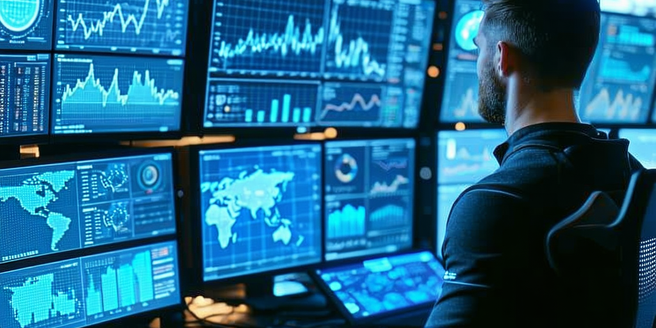
Introduction to Deep Learning in Forecasting
Deep learning is revolutionizing the field of forecasting by providing powerful techniques that mimic the way humans learn. By analyzing vast amounts of data with complex algorithms, deep learning models can uncover intricate patterns and relationships within the data that traditional statistical methods may overlook. These models have the capability to learn and make predictions without being explicitly programmed for the task, allowing for greater accuracy and flexibility. The adoption of deep learning in forecasting is expanding across various sectors, including finance, healthcare, and technology, offering improved decision-making capabilities and strategic insights. As the volume of available data grows, the potential of deep learning in forecasting continues to increase, making it a crucial area of development for future predictive models.
Key Components of Deep Learning Models
Deep learning models are built on several fundamental components that work together to process and learn from data. These include neurons, layers, loss functions, optimizers, and backpropagation. Neurons are the basic units of a neural network, where each neuron performs a specific transformation on input data. Layers consist of multiple neurons and can be stacked to form complex models with greater learning capacity. Loss functions are used to measure how well the model is performing, while optimizers adjust the model parameters to minimize errors. Backpropagation is the process of propagating the error through the network to update weights. By combining these elements effectively, deep learning models can achieve remarkable performance in a variety of tasks, offering a flexible framework for handling diverse datasets and complex forecasting challenges.
Applications of Deep Learning in Various Industries
Deep learning is transforming industries by enabling more accurate and efficient decision-making processes. In finance, deep learning models are used for stock price prediction, risk assessment, and fraud detection. Healthcare has seen advances in medical imaging analysis, drug discovery, and personalized medicine. In retail, deep learning aids in demand forecasting, customer segmentation, and recommendation systems. The automotive industry is leveraging deep learning for autonomous driving technologies, enhancing safety and navigation. Other fields like agriculture, energy, and manufacturing are also adopting deep learning to optimize processes, increase productivity, and reduce costs. The ability of deep learning to analyze large datasets and derive meaningful insights is revolutionizing how industries operate, drive innovation, and stay competitive in a rapidly evolving market.
Challenges and Limitations in Implementation
Despite the promising capabilities of deep learning, its implementation presents several challenges and limitations. One significant issue is the necessity for large volumes of labeled data to train models effectively. Collecting and annotating data can be time-consuming and expensive. Computational requirements are another hurdle, as deep learning models often demand high-performance hardware to process data efficiently, which might not be feasible for all organizations. Additionally, these models can act as ‘black boxes’, making it difficult to interpret and trust their decisions. The risk of overfitting, where models perform well on training data but poorly on new data, also persists. Furthermore, ethical concerns, such as bias embedded within training data, can lead to unintended disparities in predictions. Addressing these challenges is crucial for maximizing the potential of deep learning in practical applications.
Future Trends in Deep Learning-Based Forecasts
The future of deep learning in forecasting is poised for transformative developments, driven by advancements in technology and methodologies. Emerging trends include the integration of reinforcement learning with deep learning to enhance predictive capabilities and adapt to dynamic environments. Transfer learning and few-shot learning are gaining attention, enabling models to leverage knowledge from related tasks and reduce the need for extensive data. The rise of edge computing can facilitate real-time predictions by processing data locally on devices. Moreover, interpretability and explainability of deep learning models are becoming a focus to ensure transparency and trustworthiness. As research progresses, cohesion between artificial intelligence and other domains like cloud computing and the Internet of Things (IoT) is expected to foster more robust, efficient forecasting systems that cater to diverse industry needs.
